A 12-hour Karnataka bandh called by pro-Kannada and farmers outfits to protest the Supreme Court’s direction to release water to Tamil Nadu on Friday brought the country’s IT capital and Cauvery basin districts to a standstill and evoked a mixed response elsewhere in the state.
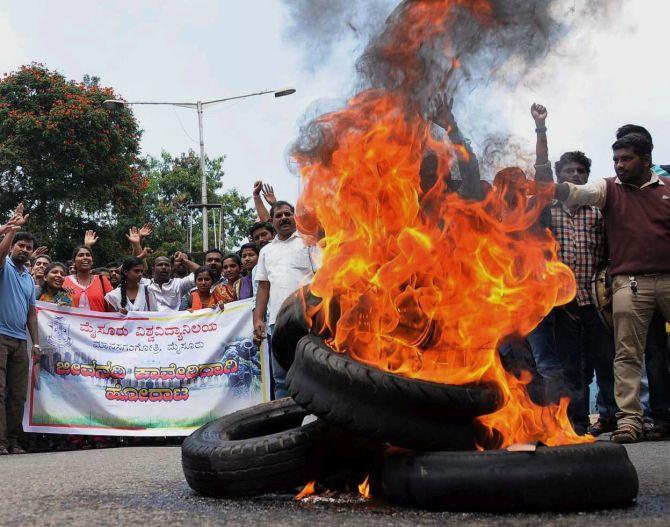
Normal life in southern Karnataka belt, known as the ‘Old Mysuru’ region, was hit by the dawn-to-dusk bandh supported by some 800 organisations and the opposition Bharatiya Janata Party and the Janata Dal-Secular, but it passed off peacefully across the state amid tight security.
Complying with the Supreme Court order on Monday last, the Karnataka government has been releasing 15,000 cusecs of water to Tamil Nadu since September 6. This has triggered a wave of protests in the state, specifically in Cauvery river belt.
The brunt of the bandh was borne by Bengaluru, Mandya, the epicentre of Cauvery agitation, Mysuru and neighboring districts where massive protest marches and demonstrations were held, but the response was tepid in coastal districts.
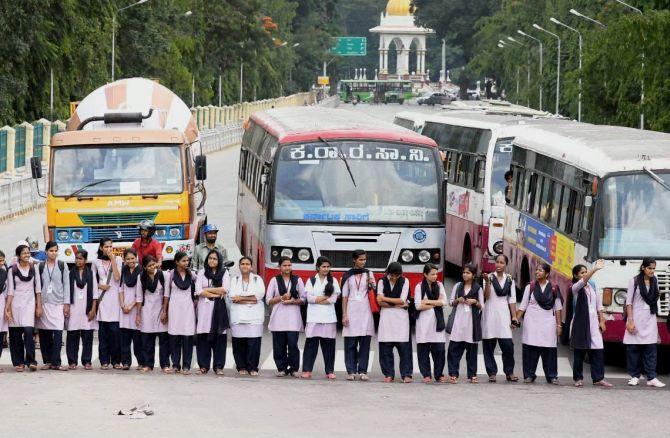
Concerned over the ‘extreme unrest’ over the release of Cauvery water to Tamil Nadu, Chief Minister Siddaramaiah requested Prime Minister Narendra Modi to call forthwith ‘on a few hours notice’ a meeting of chief ministers of the two states to end the impasse.
As the Cauvery row hotted up with the state observing the bandh, Siddaramaiah dashed off a missive to Modi, saying the ‘unrest’, if continued, would have a serious impact on the state’s economy as also the IT sector which fetches enormous revenue and foreign exchange to the country.
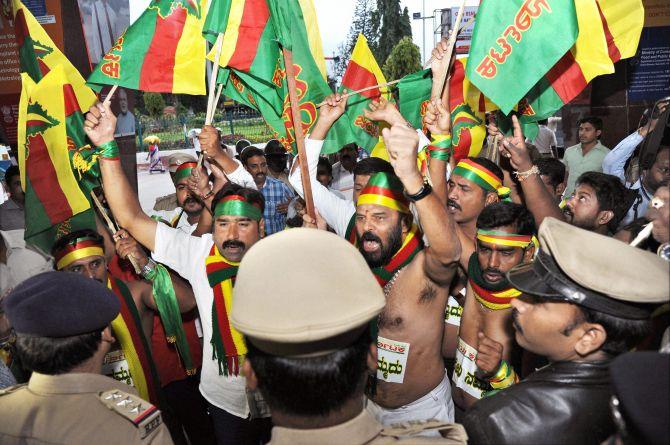
‘By this communication, I earnestly request you not only as Prime Minister, but as Head of the entire federal system, to call a meeting of the Chief Ministers of the States (forthwith on a few hours notice) to resolve the impasse,’ Siddaramaiah said in the letter.
Friday’s bandh was the fourth lockdown in six weeks — two relating to water sharing disputes with Tamil Nadu and Goa and the other two over wages including nationwide stir called by labour unions on September 2.
Roads were almost deserted in Bengaluru with shops, hotels and other commercial establishments, malls and cinema theaters shut and banking services hit.
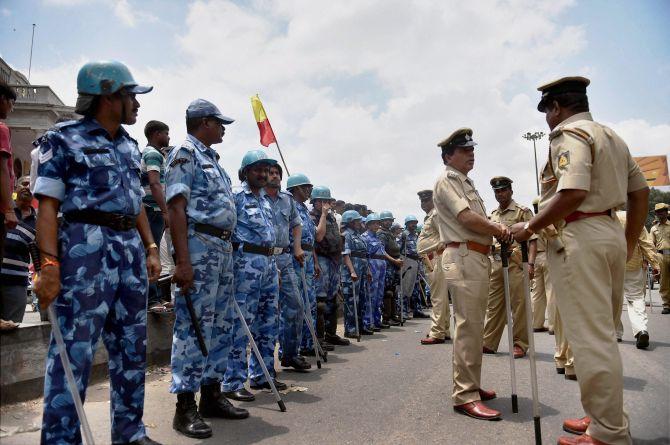
Metro services were also stopped. Educational institutions declared a holiday, and government offices were empty as attendance was not compulsory.
While some private companies had declared holiday, others had provided ‘work from home’ option to employees.
Karnataka Cable Operators Association did not air Tamil channels.
Some 14,000 security personnel were deployed in Bengaluru, bolstered by Karnataka State Reserve Police, City Armed Reserve and Rapid Action Force.
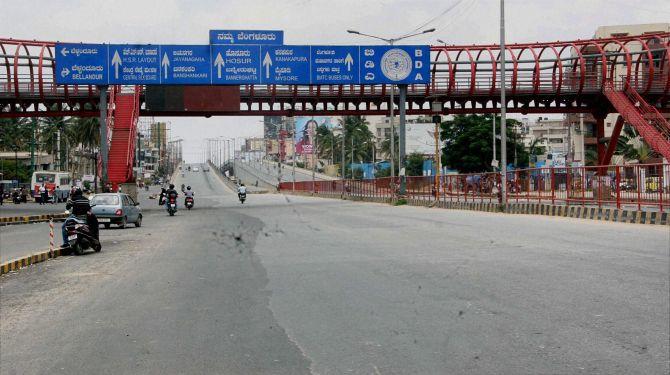
In Mandya, police lathicharged and lobbed tear-gas shells to disperse protesters who tried to storm Krishnaraja Sagar dam site, during which a few farmers were injured.
Police officials said the injured have been moved to a local hospital for treatment.
A few farmers jumped into the river water near the dam as a mark of protest, but they were rescued by a rescue team present at the spot.
One protester allegedly tried to commit suicide by consuming poison but was stopped by the police.
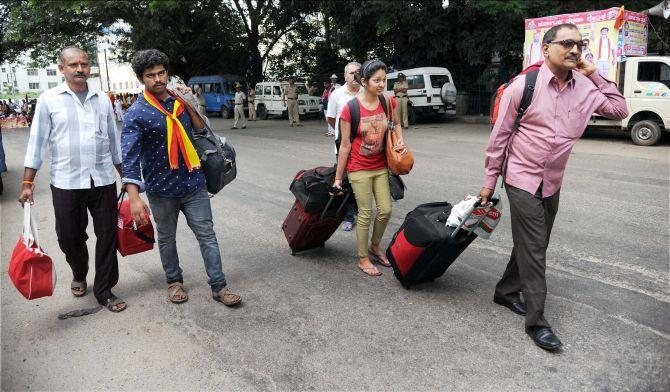
In Bengaluru, during a ‘massive’ protest march from Town hall to Freedom Park organised by Kannada Okkoota (federation), led by Kannada Chaluvali Vatal Paksha leader Vatal Nagaraj, a man allegedly stabbed himself with a sharp weapon.
He has been admitted to a hospital, police said.
Activists of pro-Kannada organisations tried to enter the departure terminal of the Kempegowda International Airport and the railway station here but were stopped by the police.
The Kannada film industry also rallied behind with actors, directors, producers and technicians holding a protest rally in the city.
The bandh, supported by a wide spectrum of organisations, unions and political parties, was ‘total’ in several parts of southern Karnataka.
[source;rediff.com]





















